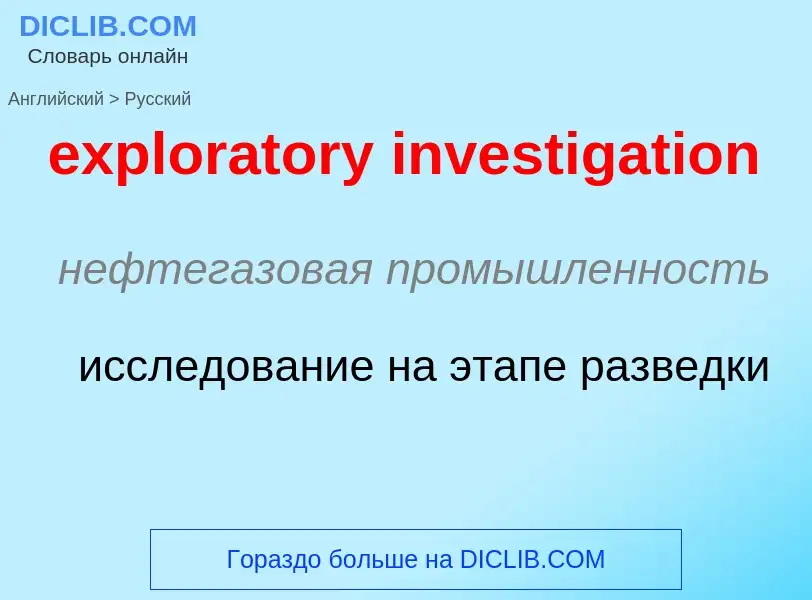Translation and analysis of words by ChatGPT artificial intelligence
On this page you can get a detailed analysis of a word or phrase, produced by the best artificial intelligence technology to date:
- how the word is used
- frequency of use
- it is used more often in oral or written speech
- word translation options
- usage examples (several phrases with translation)
- etymology
exploratory investigation - translation to russian
нефтегазовая промышленность
исследование на этапе разведки
['mə:də,skwɔd]
общая лексика
"Отряд розыска убийц", "Опергруппа убийств" (неофициальное название отделения Департамента уголовного розыска [Criminal Investigation Department], занимающегося расследованием особо опасных преступлений, связанных с убийством)
[ik'splɔ:rət(ə)ri]
общая лексика
исследовательский
зондирующий
медицина
пробный
нефтегазовая промышленность
разведочный (о скважине)
прилагательное
общая лексика
исследовательский
разведочный
пробный
испытательный
исследующий
Definition
Wikipedia
In statistics, exploratory data analysis (EDA) is an approach of analyzing data sets to summarize their main characteristics, often using statistical graphics and other data visualization methods. A statistical model can be used or not, but primarily EDA is for seeing what the data can tell us beyond the formal modeling and thereby contrasts traditional hypothesis testing. Exploratory data analysis has been promoted by John Tukey since 1970 to encourage statisticians to explore the data, and possibly formulate hypotheses that could lead to new data collection and experiments. EDA is different from initial data analysis (IDA), which focuses more narrowly on checking assumptions required for model fitting and hypothesis testing, and handling missing values and making transformations of variables as needed. EDA encompasses IDA.




![variation that increases with tip amount]]. In particular, there are more points far away from the line in the lower right than in the upper left, indicating that more customers are very cheap than very generous. variation that increases with tip amount]]. In particular, there are more points far away from the line in the lower right than in the upper left, indicating that more customers are very cheap than very generous.](https://commons.wikimedia.org/wiki/Special:FilePath/Tips-scat1.png?width=200)

